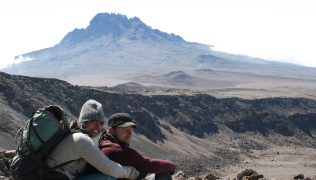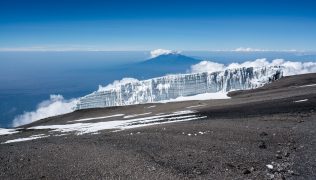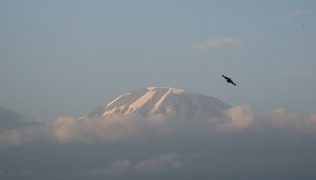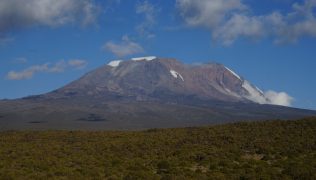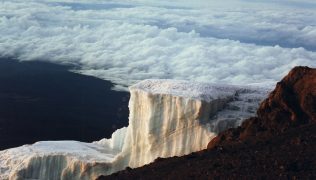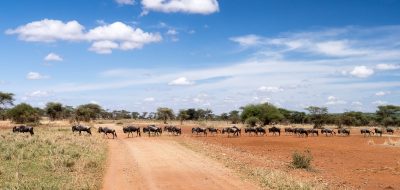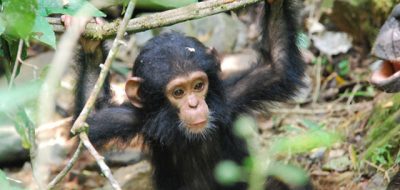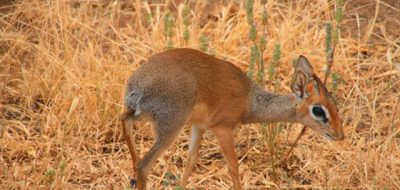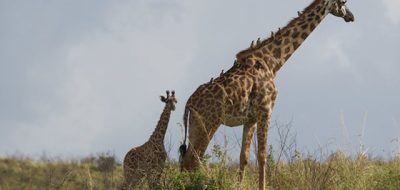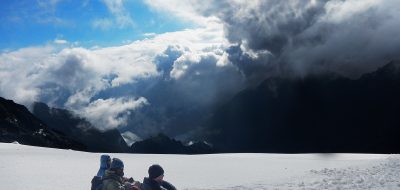Kilimanjaro National Park
In the local language, the word ‘Kilimanjaro’ means a ambiguity adorn in clouds. It could actually mean Mountain of Caravans, or Mountain of Light, or even Mountain of Greatness. Or The local Wachagga people do not actually have a name for this entire massif, just Kipoo (presently called Kibo) for the mountain’s familiar snow covered peak that commandingly stands, overseeing the whole continent, and being the rooftop of Africa.
Kilimanjaro, by name, is a figure of speech for the undeniable beauty of Eastern Africa. When you finally get to see it, you will surely understand why. This mountain is not only Africa’s highest peak, but also the highest free-standing mountain on the planet earth, rising in magnificent isolation from all the neighboring coastal scrubland to an elevation of approximately 900 meters at a height of 19,336 feet (5,895 meters).

The mountain Kilimanjaro is among the easiest to get to high peaks in the whole world, a symbol of hope for hikers from all parts of the world. The majority of climbers arrive at the crater edge with nothing more than just a walking stick, determination and the rightful clothing. For those who make it to the Uhuru Point, which is the true summit of this mountain, or to Gillman’s Point right on the crater lip, they will be awarded with climbing certificates, and certainly this is a great souvenir for every on to hold onto.
However, there is a lot more than mountain Kili and its snow capped summit. The climb of the mountain slopes is a practical climatic world adventure, right from the tropics high up into the Arctic.
Just before you go beyond the boundary of the national park at the 2,700 meter contour, the cultivated foothills give way to a verdant montane forest, home to the hard to pin down elephants, leopards, buffaloes, the decreasing in number Abbot’s duiker, plus several other small species of antelope in addition to primates. Moving on higher, you will find the moorland zone, where you will see the exceptional giant lobelias together with the huge heather.
Climbing higher over 4,000 meters, a weird alpine desert there supports very little life of just mosses plus lichen. The final vestigial zone gives way to the winter wonderland characterized of ice plus snow and eventually the magnificent rooftop of Africa.
Size and location of Kilimanjaro National Park
this national park covers a total area of 1668 sq km or 641 sq miles, and it is found in Northern Tanzania, close to Moshi town.
How to arrive at Kilimanjaro National Park
the park is 128 kilometers or 80 miles from the town of Arusha, and approximately an hour drive from the Kilimanjaro International airport.
Activities to enjoy in Kilimanjaro National Park
Normally guests participate in treks to the summit; the mountain offers a number of routes some easy while others are more demanding.
Day time or overnight walks on the Shira plateau.
Nature trails along the lower slopes.
Trout fishing
exploring the stunning Chala Crater Lake found on the southeastern slopes of this mountain.
The best time to visit Kilimanjaro National Park
For the warmest as well as the Clearest conditions we recommend that you visit from December up to February, however from July up to September it is dry although colder.
Accommodation in Kilimanjaro National Park
there are Huts plus campsites found on this mountain. In addition, a couple of hotels plus campsites can be found on the outside boundaries of this park in Marangu village and Moshi town.


